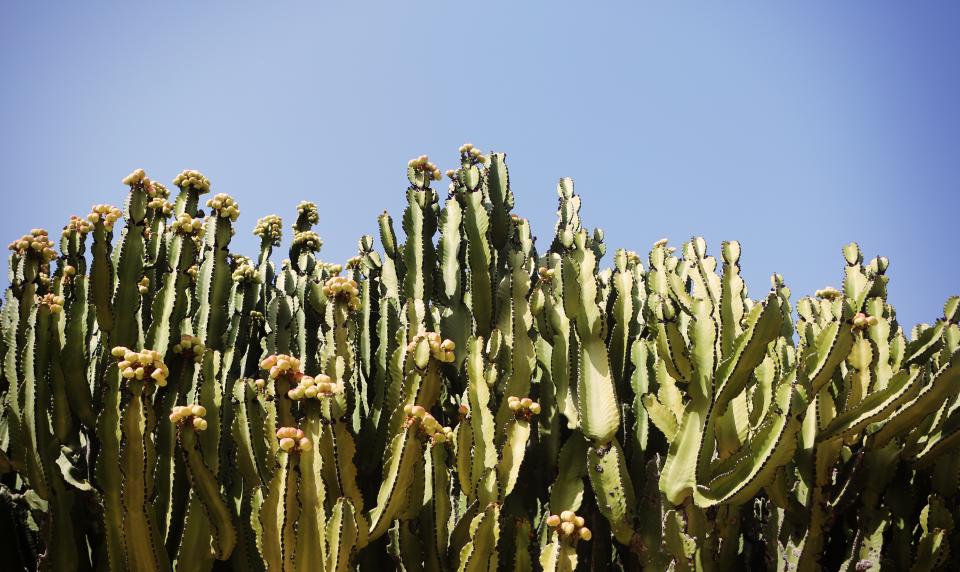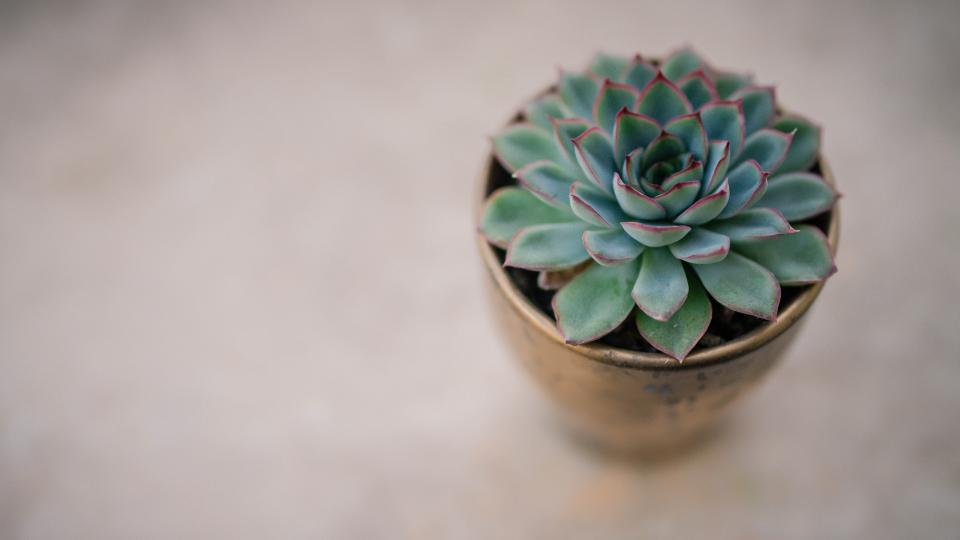This comprehensive guide will explore the complexities of succulents and their potential toxicity to cats. We'll unravel the reasons behind feline fascination with these fascinating plants, offering practical tips to ensure the safety of your furry friend. From identifying toxic species and understanding symptoms of poisoning to finding cat-friendly alternatives and navigating emergency situations, this article serves as your complete resource for navigating the world of succulents and cats.
Part 1: Unveiling the Toxicity

1.1. A Spectrum of Toxicity
Not all succulents pose an equal threat to cats. Some are known to be mildly toxic, causing minor digestive discomfort, while others can induce severe health complications. Understanding this spectrum is crucial for responsible succulent ownership.
1.2. Decoding the Culprits
Here's a closer look at common succulent species and their toxicity levels:
- Aloe vera: While renowned for its medicinal properties, aloe vera contains anthraquinones, which can irritate a cat's digestive system. Symptoms include vomiting, diarrhoea, lethargy, and in severe cases, tremors.
- Echeveria: This captivating succulent, known for its beautiful rosettes, contains saponins, mildly irritating to feline systems. Symptoms may include drooling, vomiting, diarrhoea, and lethargy.
- Crassula ovata (Jade Plant): This popular choice boasts thick, jade-green leaves, but contains toxins that can cause gastrointestinal upset in cats. Symptoms include vomiting, diarrhoea, and lethargy.
- Haworthia: These miniature succulents, cherished for their unique patterns, contain saponin glycosides, which can irritate a cat's mouth and digestive tract. Symptoms include drooling, vomiting, and diarrhoea.
- Sedum: This genus encompasses a variety of succulents, with some posing mild toxicity to cats. Symptoms may include vomiting, diarrhoea, and lethargy.
- Kalanchoe: These succulents, known for their vibrant blooms, contain cardiac glycosides, particularly toxic to cats. Symptoms range from mild gastrointestinal distress to serious heart complications, including arrhythmias and heart failure.
- Euphorbia: This diverse genus boasts a milky sap that acts as a natural defence mechanism, but is irritating to cats. Symptoms include skin irritation, gastrointestinal upset, vomiting, diarrhoea, and lethargy.
- Agave: These large, architectural succulents are particularly dangerous, containing saponins and calcium oxalate crystals. These toxins can cause severe oral irritation, vomiting, diarrhoea, and even kidney failure if ingested.
- Lithops: These fascinating "living stones" contain toxic compounds that can cause gastrointestinal upset, vomiting, and diarrhoea in cats.
1.3. Understanding the Mechanisms of Toxicity
Succulents employ various defence mechanisms to deter herbivores, often relying on toxins to protect themselves. These toxins can range from mild irritants to potent compounds that interfere with vital bodily functions.
Part 2: Recognizing the Signs of Succulent Poisoning

2.1. A Vigilant Eye
Prompt identification of symptoms is crucial in addressing succulent poisoning in cats. Observing your feline companion's behaviour and seeking veterinary guidance at the first sign of trouble is vital.
2.2. The Telltale Symptoms
While the severity and type of symptoms can vary based on the succulent ingested and the amount consumed, some common signs of poisoning include:
- Vomiting: A frequent symptom, often accompanied by drooling, as the toxins irritate the cat's digestive system.
- Diarrhoea: Can be watery and bloody, indicating severe irritation of the intestinal lining.
- Lethargy: Cats may become sluggish, uninterested in play, and prefer to lie down.
- Drooling: Excessive salivation, particularly if accompanied by pawing at the mouth, suggests oral irritation.
- Tremors: Muscle tremors or shaking may indicate neurological involvement due to the toxins.
- Seizures: A serious symptom, indicating severe poisoning that requires immediate veterinary intervention.
- Loss of appetite: Cats may lose interest in food, potentially leading to dehydration and further complications.
- Skin irritation: Contact with the sap of some succulents, particularly Euphorbia, can cause redness, itching, and inflammation.
- Difficulty breathing: In severe cases, toxins can affect respiratory function, leading to shortness of breath and laboured breathing.
2.3. Acting Swiftly
If you suspect your cat has ingested a succulent, take immediate action:
- Remove the succulent: Ensure your cat cannot access the plant again.
- Identify the species: If possible, determine the specific type of succulent ingested to assist your veterinarian.
- Contact your veterinarian: Seek immediate veterinary attention, even if symptoms seem mild.
Part 3: Understanding the Feline Fascination
3.1. A Curious Nature
Cats are renowned for their curiosity, exploring their environment with gusto. Succulents, with their unique textures and shapes, can pique their interest, leading to accidental ingestion.
3.2. The Playful Instinct
Succulents' smooth, fleshy leaves can tempt cats' playful nature, encouraging nibbling and batting. This exploratory behaviour often leads to accidental ingestion.
3.3. Indoor Environments and the Grass Craving
Cats living indoors may crave the greenery they miss in their confined spaces. Succulents, with their vibrant hues and tactile appeal, can become a substitute for grass, leading to temptation.
Part 4: Safeguarding Your Cat
4.1. Identifying Toxic Species
Before bringing any succulent into your home, carefully research its toxicity levels. There are numerous resources available online and at pet stores to help you identify safe plant options.
4.2. Strategic Placement and Barriers
Keep succulents out of your cat's reach by strategically placing them on high shelves, hanging them from the ceiling, or using barriers to create a safe zone.
4.3. Cat-Friendly Plant Alternatives
There are plenty of non-toxic plant options that can add life and vibrancy to your home without posing a threat to your feline friend:
- Catnip (Nepeta cataria): Known for its calming and stimulating effects on cats, this herb offers a safe and enjoyable treat.
- Wheatgrass: Providing essential fibre and nutrients, wheatgrass is a popular choice for cats and can be grown easily indoors.
- Spider plant (Chlorophytum comosum): This low-maintenance plant is safe for cats and can add a touch of greenery to any room.
- Calathea: These plants, known for their striking foliage, are non-toxic to cats and add a splash of colour to your home.
- Cast Iron Plant (Aspidistra elatior): Incredibly hardy and tolerant of low light conditions, this plant is a perfect choice for indoor environments.
- Rosemary: This aromatic herb is safe for cats and can deter pests.
- Lavender: While some cats may react negatively to the scent, lavender is generally considered safe for cats and can promote relaxation.
- Coleus: These plants come in a variety of colours and patterns and are safe for cats.
Part 5: What to Do in Case of Ingestion
5.1. Immediate Action
If you witness your cat ingesting a succulent, act quickly:
- Remove the plant: Ensure your cat cannot access the succulent again.
- Induce vomiting: If you're confident your cat ingested the plant recently, your veterinarian may advise inducing vomiting, but only if directed by a professional.
- Gather information: Try to determine the specific succulent species ingested to aid your veterinarian.
- Contact your veterinarian: Seek immediate veterinary attention, regardless of the apparent severity of symptoms.
5.2. Veterinary Intervention
Your veterinarian will assess your cat's condition, determine the extent of poisoning, and recommend appropriate treatment. This may involve:
- Inducing vomiting: Removing the toxins from the stomach.
- Administering activated charcoal: Absorbing toxins in the digestive tract.
- Providing supportive care: Managing symptoms such as dehydration, diarrhoea, and vomiting.
- Intravenous fluids: Rehydrating the cat and supporting vital functions.
5.3. Home Care and Monitoring
Following veterinary treatment, continue monitoring your cat for any lingering symptoms:
- Monitor for vomiting, diarrhoea, lethargy: If symptoms persist or worsen, contact your veterinarian immediately.
- Ensure hydration: Encourage your cat to drink water and offer electrolytes if needed.
- Provide a quiet environment: Give your cat a safe and comfortable space to rest.
- Avoid self-medication: Never administer any medications or treatments without consulting your veterinarian.
Part 6: FAQs
6.1. Is all succulent poison to cats?
No, not all succulents are poisonous to cats. Some species are considered non-toxic, while others pose only a mild risk. However, it's always best to err on the side of caution and assume that all succulents are potentially harmful to cats.
6.2. What are the most toxic succulents to cats?
Kalanchoe species are particularly dangerous due to their high levels of cardiac glycosides. Other highly toxic succulents include Euphorbia species and Agave.
6.3. What if my cat only nibbled a bit of a succulent?
Even small amounts of a toxic succulent can cause problems for cats. It's essential to contact your veterinarian for guidance, as they can assess the risk and advise on appropriate action.
6.4. How can I prevent my cat from eating my succulents?
Implement a combination of strategies to deter your cat, such as:
- Placement: Keep succulents out of reach on high shelves or in hanging baskets.
- Barriers: Use physical barriers, such as fences or netting, to create a safe zone.
- Deterrents: Consider using cat-repellent sprays, but always consult with your veterinarian first.
- Alternatives: Provide cat-friendly plants as a safe and enjoyable alternative.
6.5. What are the long-term effects of succulent poisoning in cats?
While most cats recover from succulent poisoning without long-term complications, some may experience lingering effects, such as gastrointestinal issues, liver damage, or heart problems. If your cat exhibits any unusual symptoms, it's vital to consult with your veterinarian.
6.6. Can I use a commercial succulent deterrent to protect my plants?
Some commercial products claim to deter cats from eating plants. However, these products may not be effective for all cats, and some may contain ingredients that are harmful to cats. Always consult with your veterinarian before using any commercial deterrents.
6.7. Can I grow succulents in an enclosed catio?
It's generally safer to avoid growing succulents in a catio or any enclosed space where your cat has access. While some succulents may be less toxic than others, it's difficult to guarantee your cat won't nibble on them.
6.8. Are there any specific types of succulents that are generally considered safe for cats?
While there are no succulents universally considered safe for cats, some are less toxic than others. These include:
- Sedum morganianum (Burro's Tail): Considered relatively low-risk, but still best to keep out of reach.
- Graptopetalum paraguayense (Ghost Plant): Mildly toxic, but less concerning than many other species.
- Pachyphytum: Generally considered less toxic, but still best to exercise caution.
Remember, it's always best to err on the side of caution and choose non-toxic alternatives whenever possible. By understanding the potential dangers of succulents, practicing responsible ownership, and providing safe and stimulating alternatives, you can ensure a harmonious coexistence between your feline friend and your beloved plants.
Everyone is watching

Are Cat Ribs Flexible? Understanding Their Anatomy
CATS & KITTENSThis article delves into the fascinating world of feline anatomy, exploring the flexibility of cat ribs and ho...

Can Cats Eat Bananas? (Everything You Need to Know)
CATS & KITTENSThis article dives into the intriguing question of whether cats can safely enjoy the sweet, yellow fruit, bana...

Cat Lifespan: How Long Do Cats Live?
CATS & KITTENSThis comprehensive guide explores the factors influencing the lifespan of our feline companions, providing ins...

Can Cats Get COVID-19? What You Need to Know
CATS & KITTENSThis article will delve into the fascinating world of feline COVID-19 susceptibility. We'll explore whether ca...

Can Cats Eat Eggs? A Complete Guide to Egg Safety for Your Feline Friend
CATS & KITTENSWhen it comes to treating our furry companions, we all want to ensure we're doing what's best for them. Eggs...
